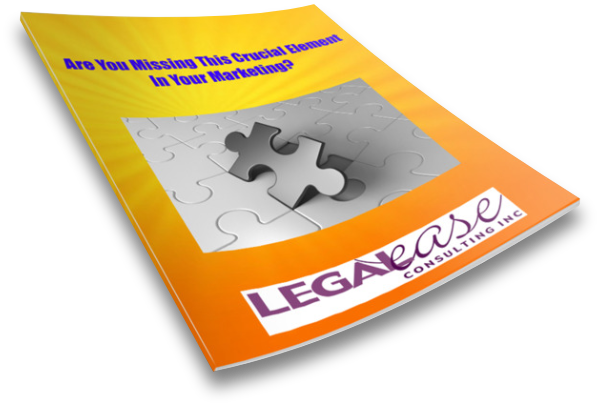
While I wouldn’t define myself as a neat freak, I have learned over the years that my environment has a significant effect on my mood, my productivity, and my overall effectiveness. Whether at home or at work, I don’t like to have a lot of clutter around, and I like things to be neat.
Whether you think you are bothered by clutter or not, studies show that in fact, clutter can have a significant psychological effect on all of us – in short, clutter produces stress and anxiety – something lawyers certainly don’t need any more of.
I’ve been interested in
One of my most popular all-time posts over on the Legal Ease blog is this post on organizing your law office. As I discuss in that post, one of the first steps in decluttering and organizing is to purge – or get rid of – the unnecessary. Since I am admittedly better at the organizing part, over the past couple of weeks I’ve started doing some purging both in my home and in my office.
For some reason, this seems to be a February topic for me – the aforementioned blog post was also written in February. I’m not quite sure why. It could be because February is usually when I start gathering paperwork for my taxes, or because my birthday falls at the end of January and that sparks a need to get rid of the old and focus on a more promising future, or because it’s cold outside in February which means I’m spending more time indoors and I feel the need to work that much harder on my environment.
Should you Kon-Mari your office?
This year, all of this coincides with a sudden appearance of Marie Kondo everywhere. Not a day goes by that I don’t see some reference to Marie Kondo in my Facebook feed or see another article or comment about her decluttering style. That could be because in the early part of the year people are focused on their New Year’s resolutions and making their lives better, or because of the recent Netflix series depicting Kondo helping clients to “tidy up.”
I was first introduced to Marie Kondo and her “Kon-Mari” method several years ago, and at that time, I purchased a (digital) copy of her book, “The Life-Changing Magic of Tidying Up.” For those who are not familiar with her, Marie Kondo is a Japanese organizational consultant who helps her clients declutter and organize by category, rather than by room or location. In other words, she has her clients focus on all of their clothing at once (and I mean ALL of it – taking all of the clothing wherever it is located throughout the house and putting it in one big pile), then all of their books and papers, and so on, rather than tackling a specific room or drawer or cabinet.
The criteria Kondo uses for deciding what stays and what goes focuses – believe it or not – on what to keep, rather than what to throw away. This is a subtle, but important, distinction from much of the decluttering advice out there.
When making the decision about whether to keep an item or get rid of it (donate, recycle, give away or trash) Kondo counsels her clients to physically handle the item and ask themselves whether the item “sparks joy” for them. If it does, it stays.
Of course, Kondo also recognizes that some items are necessary even if they do not “spark joy” per se – and a lot of the clutter in your office probably falls into this category – but certainly not all of it.
Since clutter and organization is top of mind for me right now, and is a frequent issue for my clients, I thought I would do a series of posts tackling these issues and discussing my own experiences, along with the experiences of some of my clients.
Even with all of the advancement in technology that has occurred over the past several years, we are far from being a paperless society, and the practice of law is certainly not paper-free. Since paper remains one of the biggest clutter culprits in law offices, whether they are home offices or in large office buildings, it’s the first one I’m tackling.
De-cluttering office paperwork: What to do first
When dealing with your office, I’m not sure I can fully get on board with Kondo’s recommendation to take all of your paper and put it into one big pile to go through all at once (also keeping in mind that Kondo’s recommendation for almost all paper is just to toss it). I just don’t think that is realistic or that it could be accomplished within a reasonable amount of time, and it would be impossible to work while having all of your paperwork piled up in one spot waiting to be sorted.
For this reason, at least when dealing with paperwork in the office, I’ll stick with my original position for now, which is to tackle a small piece at a time. Modifying Kondo’s method, instead of doing one drawer or area of the office, I decided to see if I could tackle one category of paper at a time.
I started with my “reference” files, but you might prefer to start with your hard-copy caselaw or motion bank (have them scanned if you really need to save them), marketing or promotional materials, or your periodicals. This might work well for you if you can easily put your hands on all of the paperwork that belongs in a specific category at once. Otherwise, you may need to start one drawer or pile at a time – pick the oldest one, since it will typically be the easiest.
Right now I’m focusing on non-case or client-related materials, and paperwork not related to your practice financials, because I think they are easier to deal with, and you don’t have to worry about what your ethical rules or the IRS requires. In addition, working with these categories first means you can spend a few minutes at a time working on them and not interrupt the rest of your workflow. You can even take these categories of materials out of your office to a conference room or offsite to do your sorting and purging, if necessary.
How to decide what stays and what goes
My reference files consisted of a whole file drawer full of articles and reference materials sub-divided into categories. Many of these articles had been painstakingly saved from CLE programs and seminars or ripped out of magazines over many years. Some of them were my own articles or materials from CLE programs I presented.
Often, the articles I had collected had been filed without ever having been read – I’d dealt with periodical clutter at some time in the past by pulling out articles of interest and discarding the rest of the periodical. But I still didn’t have time to read the article, so I just filed it. Others were saved with the idea that when I had a question or wanted to write about one of these subjects, I could pull out the file folder for that category to do some research or get some inspiration.
Thinking about how much time I already spent pulling out, categorizing, and filing these articles and reference materials – and the fact that I very rarely ever pull open that file drawer when I’m planning my editorial calendar, getting ready to write, doing research to write a piece or plan a presentation, or even when I’m working with a client on an issue corresponding to one of my reference files – was a little mind-boggling. But it really drove home the point for me that saving all of that material wasn’t serving me at all.
Realistically, when I’m planning or writing now, I’m much more likely to hop over to Google to do research or look for inspiration, or to go to Evernote and see what articles I’ve got saved relating to the topic I’m writing on. I also have a tag in Evernote for “blog post ideas” when I come across a topic that might be of interest to my readers, so if I don’t know what to write about, I’ll search Evernote for that tag. What I don’t do is search through my paper folders.
Given all of the above, I purged about 85% of my paper reference files in relatively short order. Most of what I kept will be scanned, tagged and saved in Evernote for the purposes I mentioned above. Most of the rest I will go through again quickly and just add to my list of ideas for presentations or articles – the reference materials themselves will go.
One thing I always knew, but confirmed again by going through my reference files is that most periodicals recycle the same topics over and over, so there is little need to save them if you don’t have time to read them when they come out – it’s far better to search the internet (and many of these periodicals have digital versions now anyway) to find the most updated version of the article or topic.
In the post I referenced above from the Legal Ease blog, I recommended that when sorting/purging, you ask yourself some questions in the “organizing” phase, after you’ve already purged, but upon further reflection, they are useful for the purging process as well. Here they are with some modifications and additions:
- How l
ong have I had this, and when was the last time I used or referred to it? - What is the realistic likelihood that I will use or refer to this in
the future ? Under what specificcircumstance might I need to reference this information or document in the future? - Is
the information contained in it still relevant and up to date? Is this something I need to use or access frequently?Is this something I need to retain for legal or financial purposes?Is this information I can easily find elsewhere if I need it?- Do I have the time and energy to deal with this again in the future, or
would it be better to get rid of it now? Does it fit my current practice and my goals for myself and my firm?
Are you ready to take on the clutter in your office? Accept the challenge!
If you’re sick of the clutter in your office, or just want to make some more space to focus on what is really important, I challenge you to go on this journey with me and start de-cluttering your law office.
Leave a comment on this post or come on over to the Legal Ease Consulting, Inc Facebook page and join the discussion. Tell me what your biggest clutter and organization challenges are and what steps you’re taking to tackle them. And let me know if you have questions or topic ideas for future clutter/organization posts!





1 thought on “Decluttering Your Law Office: Getting Started”
Comments are closed.